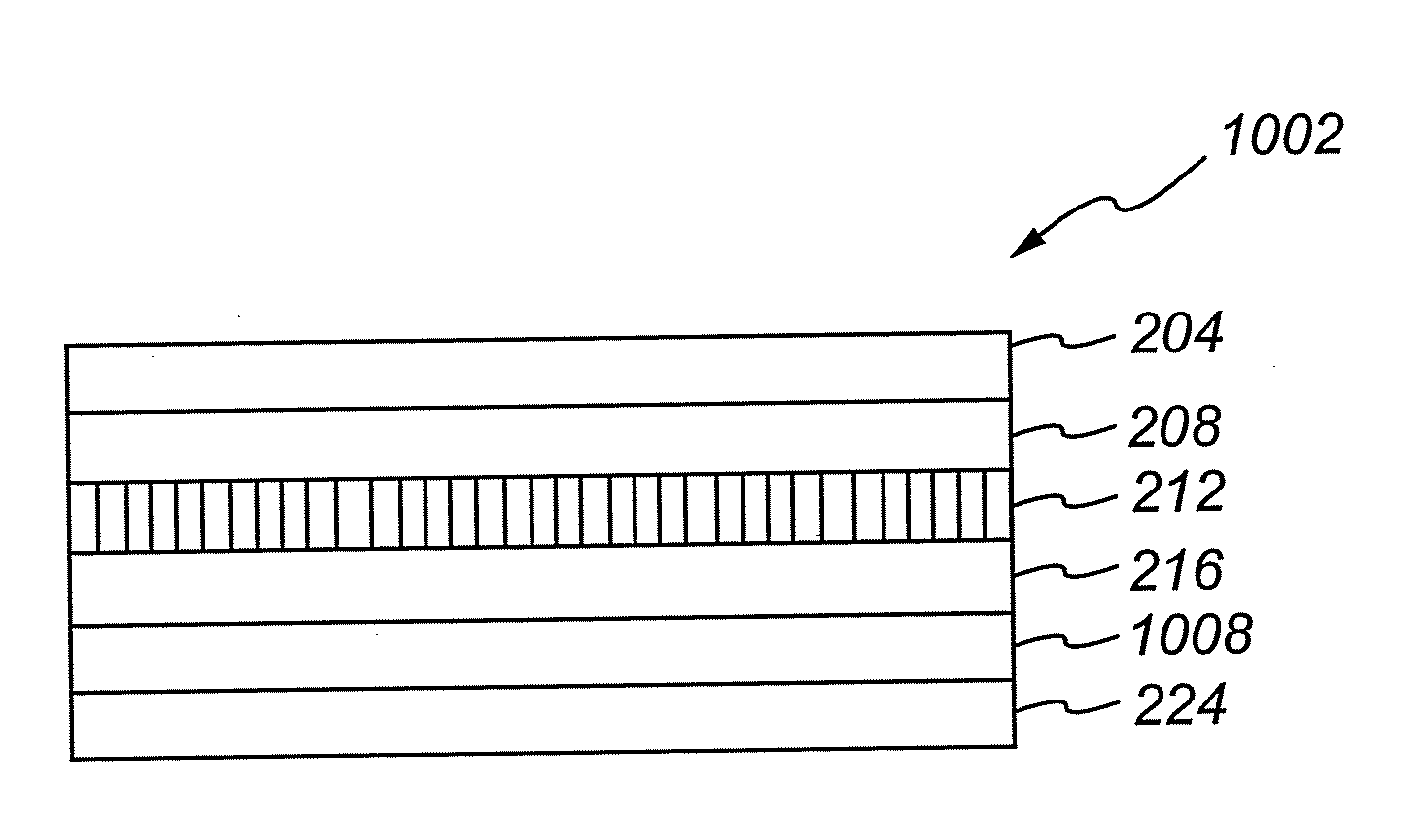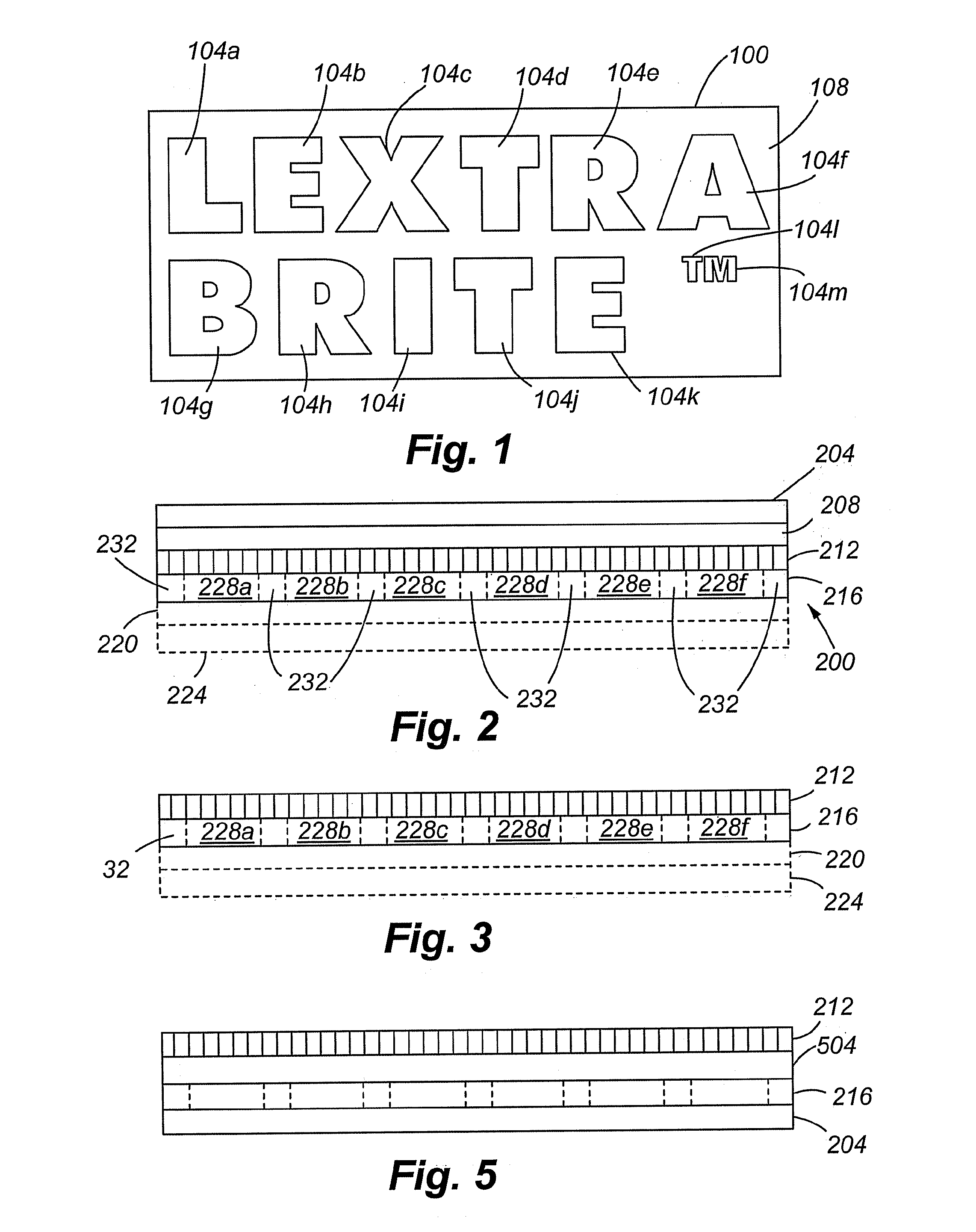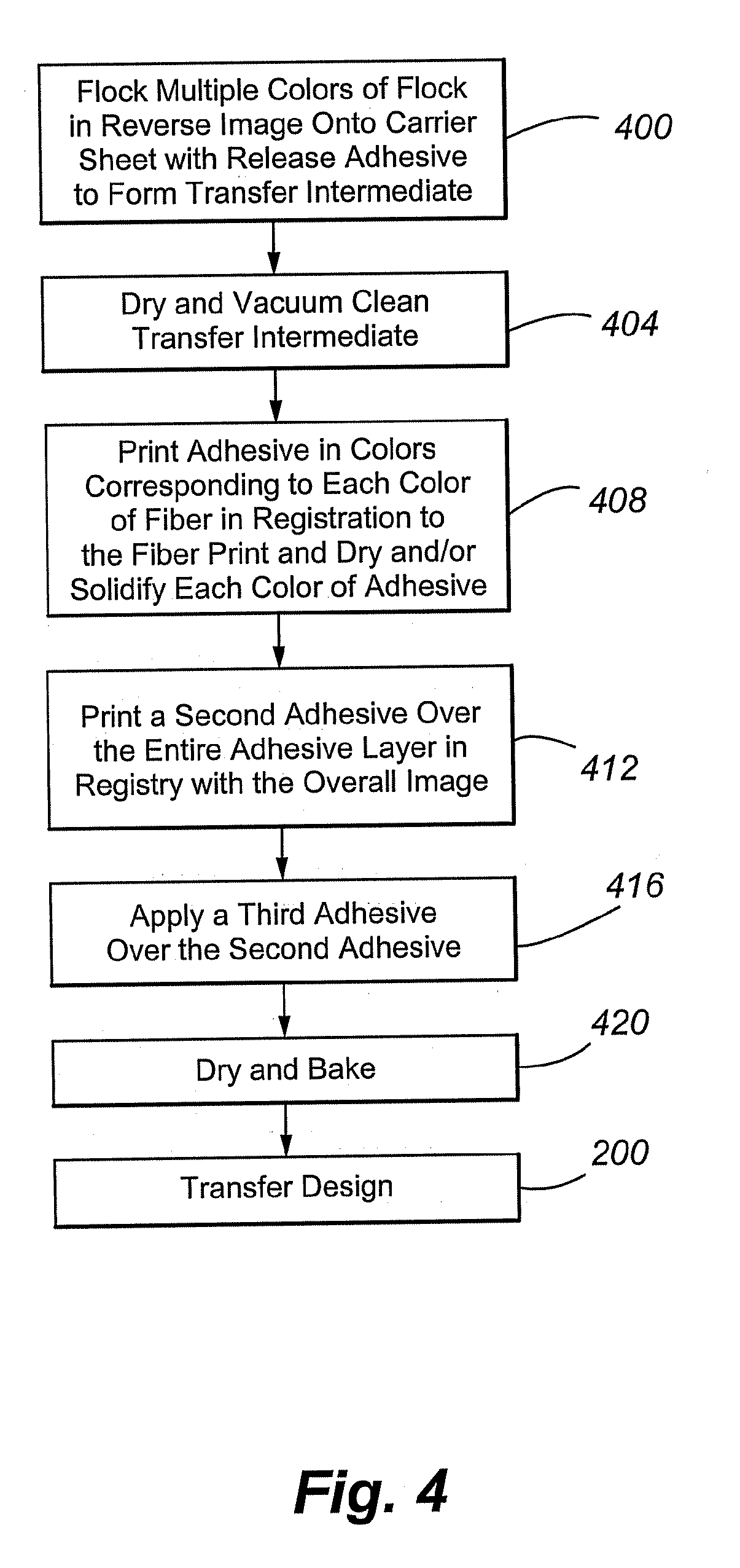Wet-on-wet method for forming flocked adhesive article
a technology of adhesive articles and wet-on-wet, which is applied in the field of flocked articles, can solve the problems of increasing operating costs, less visually appealing, and not enhancing or amplifying the fiber color, and achieves the effects of reducing the density of flocked articles, reducing the shading effect, and eliminating unsightly shading or mottling or shadows
- Summary
- Abstract
- Description
- Claims
- Application Information
AI Technical Summary
Benefits of technology
Problems solved by technology
Method used
Image
Examples
Embodiment Construction
[0040]FIG. 1 shows a flocked article 100 according to an embodiment of the present invention. The flocked article 100 comprises two different colored regions, namely lettered areas 104a-m having a first color and a background region 108 having a second color. The lettered areas 104a-m and the background region 108 includes a plurality of flock fibers, colored inks or colored adhesives, such as colored latex adhesives. For example, both the flock and at least a portion of the underlying adhesive in the lettered areas 104a have substantially the same (first) color and that in the background region 108 substantially the same (second) color. In this way, the adhesive will “blend in” with, and visually highlight the flock.
[0041]The flocked article 100 uses flock fibers having a bright luster and having little, if any, dulling light dispersants, such as a white pigment (i.e. titanium dioxide) to enable a substantial amount of light to travel through the fiber. As used herein, the term “lu...
PUM
| Property | Measurement | Unit |
|---|---|---|
| weight percent | aaaaa | aaaaa |
| tensile strength | aaaaa | aaaaa |
| tensile strength | aaaaa | aaaaa |
Abstract
Description
Claims
Application Information
 Login to View More
Login to View More - R&D
- Intellectual Property
- Life Sciences
- Materials
- Tech Scout
- Unparalleled Data Quality
- Higher Quality Content
- 60% Fewer Hallucinations
Browse by: Latest US Patents, China's latest patents, Technical Efficacy Thesaurus, Application Domain, Technology Topic, Popular Technical Reports.
© 2025 PatSnap. All rights reserved.Legal|Privacy policy|Modern Slavery Act Transparency Statement|Sitemap|About US| Contact US: help@patsnap.com



